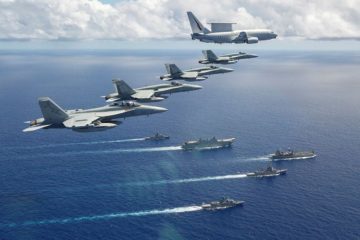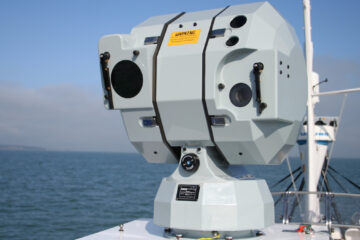According to the Defense Security Cooperation Agency:
The Government of Australia has requested to buy twelve (12) MH-60R Multi-Mission helicopters; thirty (30) T-700-GE-401C engines (24 installed, 6 spares); twelve (12) APS-153(V) Multi-Mode Radars (installed); twelve (12) AN/AAS-44C(V) Multi-Spectral Targeting Systems (installed); thirty-four (34) Embedded Global Positioning System/Precise Positioning Service (GPS/PPS)/Inertial Navigation Systems (EGI) with Selective Availability/Anti-Spoofing Module (SAASM) (24 installed, 10 spares); twenty (20) Link 16 Multifunctional Information Distribution Systems (MIDS) – Joint Tactical Radio System (JTRS) (12 installed, 8 spares); twelve (12) GAU-61 Digital Rocket Launchers (aircraft provisions only); twelve (12) Airborne Low Frequency Sonars (ALFS) (aircraft provisions only); eighteen (18) AN/AAR-47 Missile Warning Systems (12 installed, 6 spares); eighteen (18) AN/ALE-47 Chaff and Flare Dispenser, Electronic Countermeasures (12 installed, 6 spares); twelve (12) AN/ALQ-210 Electronic Support Measures (ESM) Systems (installed); twenty-four (24) M299 Missile Launchers; twelve (12) GAU-21 Crew Served Guns aircraft provisions (installed, includes aircraft adapter, ammunition bin, and other accessories); twelve (12) M240D Crew Served Gun Cradles (installed); and eighteen (18) AN/ARQ-59 Hawklink Radio Terminals (12 installed, 6 spares). Also included are AN/ARC-210 RT-2036 UHF/VHF radios with Communications Security (COMSEC); AN/APX-123 Identification Friend or Foe (IFF) transponders; KIV-78; KIV-6; KOV-21; KGV-135A; Advanced Data Transfer Systems (ADTS); Airborne Low Frequency Sonars (ALFS) Training Simulators/Operational Machine Interface Assistants (ATS OMIA); spare engine containers; trade studies with industry to determine the feasibility and cost of implementing provisions for additional passenger seating and modifications to achieve enhanced crew survivability; defense services; spare and repair parts; support and test equipment; communication equipment; ferry support; publications and technical documentation; personnel training and training equipment; United States (U.S.) Government and contractor engineering, technical, and logistics support services; obsolescence engineering, integration, and test activities required to ensure readiness for the production of the Australian MH-60R helicopters; and other related elements of programmatic, technical and logistics support. The total estimated value is $985 million.
These twelve MH-60R ‘Romeos’ would likely replace the six MRH90 ‘Taipan’ currently in-service with the Royal Australian Navy (RAN). The move would allow the RAN to have a single helicopter type in its fleet which would ease maintenance. The MRH90 are used for utility missions. The RAN became the first MH-60R export customer with 24 now in service. They were delivered between 2013 and 2016.
About MH-60R “Romeo” maritime helicopter

The U..S Navy is the main operator of the MH-60R with 289 units in its fleet. It is the primary anti-submarine warfare and anti-surface warfare helicopter in the fleet.
The MH-60R combines the features of the SH-60B and SH-60F aircraft. Its sensors package includes an MTS-FLIR, the AN/APS-147 multi-mode radar/IFF interrogator, an advanced airborne fleet data link, and a more advanced airborne active low frequency sonar (ALFS). Offensive capabilities are improved by the addition of new Mk-54 air-launched torpedoes and AGM-114 Hellfire missiles.
So far, the Romeo has been selected by the navies of the United States, Denmark, Australia and Saudi Arabia. In 2019, the U.S. State Department approved similar deals for the ROK Navy (South Korea) as well as for the Hellenic Navy. India became the latest country to place an order for 24 MH-60Rs in February 2020. Taiwan’s Republic of China (ROC) Navy could be next.






